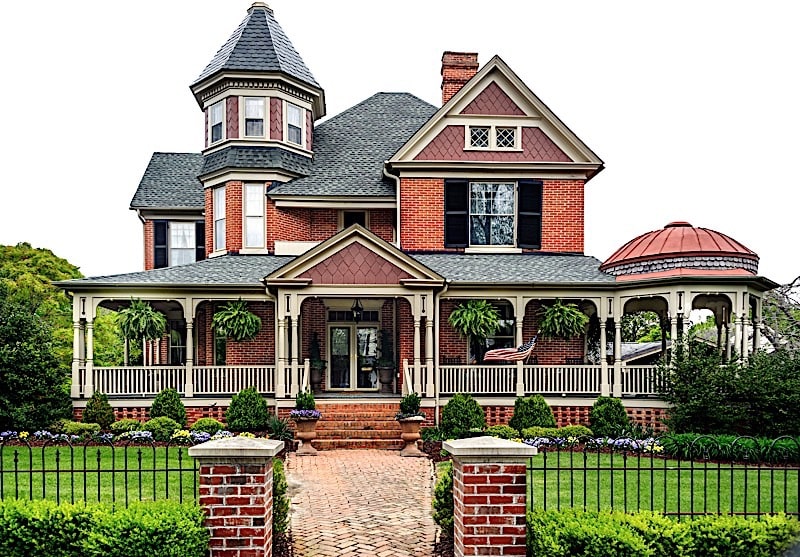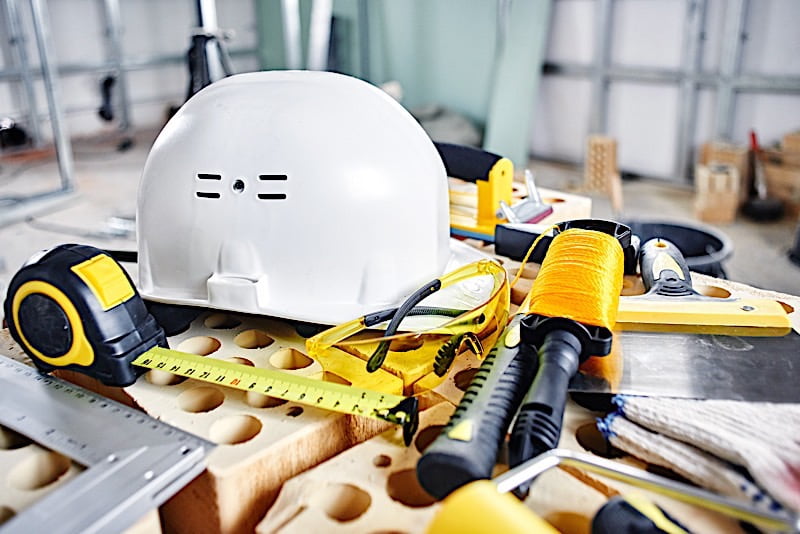Key Takeaways
- Remodeling old homes must be done with historical accuracy to qualify as a restoration.
- Fixing up an old house is not impossible, but the process must be completed with an attention to detail.
- One of the secrets to old home remodels is learning to accept the quirks of a historical property.
Older houses have a certain charm that can make them attractive to real estate investors and home buyers alike. Though in many cases, the same features that make these homes unique can also result in a number of maintenance issues. That’s why understanding the old house restoration process is crucial for anyone thinking of purchasing this type of home.
Be sure not to confuse restoration with renovation, as these processes are actually quite different. Restoring a home involves improving the property with historical accuracy, while renovating refers to upgrading homes with modern features. Keep reading to learn how to make an old house look new through restoration.
[ Thinking about investing in real estate? Register to attend a FREE online real estate class and learn how to get started investing in real estate. ]

Old House Renovation Tips
When it comes to renovating old homes, one of the most important things to remember is that each property is going to have unique characteristics. While typically renovations may be more formulaic, these types of restorations will vary from property to property. For this reason, investors should be sure they take time to prepare accordingly for each project.
Before diving in, it is also crucial to address a common misconception about older homes: historic properties are more expensive to rehab compared to traditional properties. In reality, restoring an old house on a budget is entirely possible, so long as investors and homeowners familiarize themselves with what to expect beforehand. Looking at a restoration project as a whole will help anyone avoid unexpected issues that could break the bank.
That said, here are several tips to keep in mind as you plan an old house restoration:
-
Always mind due diligence before taking on a restoration project.
-
Identify professionals who have experience working with older homes.
-
Start by addressing major restorations before moving to cosmetic fixes.
-
Understand that unique quirks are often what make old homes so charming.
Think Before You Act
The first step to purchasing an old house is deciding whether it should be renovated or restored. If you plan to restore a property, be sure to first understand the history of the home. This involves researching the architecture, materials and any systems. Learn about the former owners and attempt to identify which features were part of the original property versus which features have been updated, if any.
At this stage it is also important to consider what purpose the home will serve after the restoration is complete. Determine whether you plan to sell the property, rent it, or live in and maintain it. This distinction will help you decide which features will need to be modernized, and which should be preserved for historical accuracy. Evaluating the condition of the property and designating its future use will help guide the restoration process, budget and timeline.
Once you decide to move forward with an old house restoration, research any city rules, restrictions, and regulations that may govern historical properties. Many historic districts have ordinances in place to preserve the integrity of the homes and neighborhoods. While most rules will only apply to the exterior of the properties, it is still important to mind due diligence before getting started.
Assemble A Team
Restoring old homes can be a complex process, which is why it helps to have an experienced team. Look for a contractor and inspector who have a background in historical properties. It may also be helpful to contact local historians or other professionals dedicated to preserving older properties. They will be able to guide the restoration process, and can give you a better idea of what to expect.
Additionally, it is important to ensure that everyone involved in the project is aware of your end goal. Team members should be on the same page when rehabbing any property, but especially working with older homes. To learn more about building a strong real estate team, read this article.
Start With The Biggest Challenges
When starting a restoration project, it can be tempting to start with simple cosmetic fixes. However, investors run the risk of making unnecessary changes, hurting their budgets, and delaying their project timelines when they choose to start with the smaller fixes and upgrades. For example, restoring the floors may seem like an easy project to get out of the way; but starting with this change could lead to the need for more repairs later in the restoration.
Here are some examples of the biggest challenges that come with restoring old homes:
-
Masonry and Stonework: If there are any stone or brick features on the property it is a good idea to have them inspected before you begin restoring the property. Depending on the location and time period in which the house was built, certain materials have been found to be less structurally sound. Keep in mind that these projects may require specialists to properly complete.
-
Foundation Cracks: Many old properties were built on foundations that have not had the chance to withstand the test of time. When starting a restoration, survey the foundation and keep a lookout for cracks or areas of instability. If you do find any foundational issues, do not be alarmed. More often than not, they can be fixed with sealing and proper ventilation.
-
Moisture: One of the biggest problems in old homes is the potential for mold growth. Residual moisture in the property can be a result of leaks or even the climate of the location. Be sure to inspect and address any mold or water issues before starting a restoration project.
-
Windows and Doors: It should come as no surprise that insulation has come a long way in recent years. With the rise of green building materials and energy efficiency, there are a number of ways to improve the windows and doors of a home.
-
Electrical: Depending on the year a property was constructed, the electrical system could be dramatically behind current regulations. For example, old properties are often missing grounded electrical outlets throughout the home. Find an electrician with experience in home restoration who will be able to help bring the house up to code.
Accept The Quirks
Regardless of your goal, remember to not go overboard with your old house restoration projects. Sometimes the same quirks that make a restoration difficult are the features that give a property its character. So long as the features do not influence the safety or structure of the home, leave them as part of the finished product.
For example, it is not uncommon to see unique hardware, shorter door frames or even crooked floor boards in older homes. While fixing these features may make the home more appealing to a modern day buyer, changing them could take away from both the historical accuracy and the charm of the property. As you make a list of projects, make sure that each will truly improve the property in some way.

Summary
With the popularity of HGTV and home renovation shows, it is not uncommon to dream about restoring an old house. After all, these projects not only involve improving the state of a property but also preserving its history. If you find yourself interested in old house restoration projects, do not be afraid to do a little research. While these projects may seem highly challenging, they can also be highly rewarding in the long run.
Have you ever worked on a historical property? Share your old house restoration before and after photos in the comments below!
Ready to start taking advantage of the current opportunities in the real estate market?
Click the banner below to take a 90-minute online training class and get started learning how to invest in today’s real estate market!


